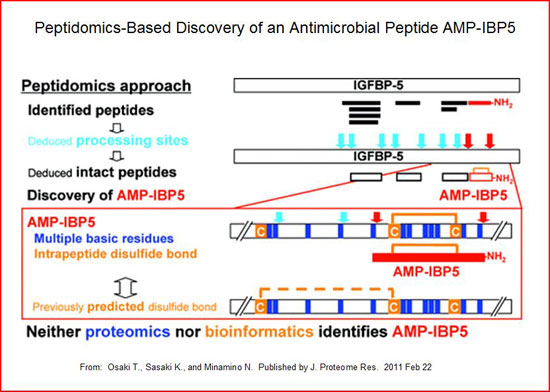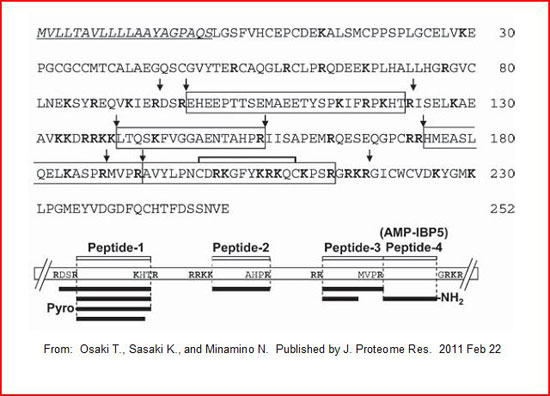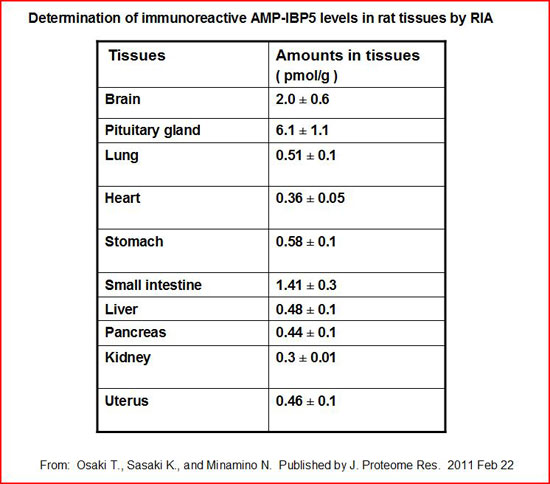


.png)
The antimicrobial peptide derived from insulin-like growth factor-binding protein 5 (AMP- IBP5) exhibits antimicrobial activities and immunomodulatory functions in keratinocytes and fibrob- lasts. However, its role in regulating skin barrier function remains unclear. Here, we investigated the effects of AMP-IBP5 on the skin barrier and its role in the pathogenesis of atopic dermatitis (AD). 2,4-Dinitrochlorobenzene was used to induce AD-like skin inflammation. Transepithelial electrical resistance and permeability assays were used to investigate tight junction (TJ) barrier function in normal human epidermal keratinocytes and mice. AMP-IBP5 increased the expression of TJ-related proteins and their distribution along the intercellular borders. AMP-IBP5 also improved TJ barrier function through activation of the atypical protein kinase C and Rac1 pathways. In AD mice, AMP-IBP5 ameliorated dermatitis-like symptoms restored the expression of TJ-related proteins, suppressed the expression of inflammatory and pruritic cytokines, and improved skin barrier function. Interestingly, the ability of AMP-IBP5 to alleviate inflammation and improve skin barrier function in AD mice was abolished in mice treated with an antagonist of the low-density lipoprotein receptor-related protein-1 (LRP1) receptor. Collectively, these findings indicate that AMP-IBP5 may ameliorate AD-like inflammation and enhance skin barrier function through LRP1, suggesting a possible role for AMP-IBP5 in the treatment of AD.
Nguyen HLT, Peng G, Trujillo-Paez JV, et al. The antimicrobial peptide amp-ibp5 suppresses dermatitis-like lesions in a mouse model of atopic dermatitis through the low-density lipoprotein receptor-related protein-1 receptor. Int J Mol Sci. 2023;24(6):5200.
Insulin-like growth factor-binding protein 5 (IGFBP-5) plays a role in cell growth, differentiation, and apoptosis. In this study, we found that IGFBP5 was markedly downregulated in ovarian cancer tissue. We investigated the functional significance of IGFBP-5 as a tumor suppressor. To determine functional regions of IGFBP-5, truncation mutants were prepared and were studied the effect on tumor growth. Expression of C-terminal region of IGFBP-5 significantly decreased tumor growth in an ovarian cancer xenograft. A peptide derived from the C-terminus of IGFBP-5 (BP5-C) was synthesized to evaluate the minimal amino acid motif that retained anti-tumorigenic activity and its effect on angiogenesis was studied. BP5-C peptide decreased the expression of VEGF-A and MMP-9, phosphorylation of Akt and ERK, and NF-kB activity, and inhibited angiogenesis in in vitro and ex vivo systems. Furthermore, BP5-C peptide significantly decreased tumor weight and angiogenesis in both ovarian cancer orthotopic xenograft and patient-derived xenograft mice. These results suggest that the C-terminus of IGFBP-5 exerts anti-cancer activity by inhibiting angiogenesis via regulation of the Akt/ERK and NF-kB-VEGF/MMP-9 signaling pathway, and might be considered as a novel angiogenesis inhibitor for the treatment of ovarian cancer.
Hwang JR, Cho YJ, Lee Y et al., Sci Rep. 2016 Dec 23;6:39334. doi: 10.1038/srep39334.
Antimicrobial peptides (AMPs) are effector molecules that are able to kill or inactivate microbial pathogens. However, most AMPs harbor multiple basic amino acids that hamper current proteomic identification. In our peptidomic survey of endogenous peptides, we identified a novel intramolecular disulfide-linked 22-residue amidated peptide. This peptide, designated AMP-IBP5 (antimicrobial peptide derived from insulin-like growth factor-binding protein 5), showed antimicrobial activity against six of the eight microorganisms tested at concentrations comparable to or lower than those for well-characterized AMPs cathelicidin and ?-defensin-2. AMP-IBP5 is identical at the amino acid level between human, mouse, rat, pig, and cow. Natural occurrence of this peptide as the originally isolated form was demonstrated in the rat brain and intestine, using mass spectrometric characterization of major immunoreactivity. The peptide is flanked N-terminally by a single arginine and C-terminally by a common amidation signal, indicating that insulin-like growth factor-binding protein 5 (IGFBP-5) undergoes specific cleavage by a defined set of processing proteases. Furthermore, the intramolecular linkage C199-C210 reveals itself as a correct disulfide pairing in the precursor protein, the finding not inferred from closely related family members IGFBP-4 and -6. In principle, neither conventional proteomics nor bioinformatics would achieve the identification of this AMP. Our study exemplifies the impact of peptidomics to study naturally occurring peptides.
Osaki T, Sasaki K, Minamino N. Peptidomics-based discovery of an antimicrobial peptide derived from insulin-like growth factor-binding protein 5. J Proteome Res. 2011;10(4):1870-80.
IGFBP-5 is known to be involved in various cell phenomena such as proliferation, differentiation, and apoptosis. However, the exact mechanisms by which IGFBP-5 exerts its functions are unclear. In this study, we demonstrate for the first time that IGFBP-5 is a TNFR1-interacting protein. We found that ectopic expression of IGFBP-5 induced TNFR1 gene expression, and that IGFBP-5 interacted with TNFR1 in both an in vivo and an in vitro system. Secreted IGFBP-5 interacted with GST-TNFR1 and this interaction was blocked by TNF-α, demonstrating that IGFBP-5 might be a TNFR1 ligand. Furthermore, conditioned media containing secreted IGFBP-5 inhibited PMA-induced NF-κB activity and IL-6 expression in U-937 cells. Coimmunoprecipitation assays of TNFR1 and IGFBP-5 wild-type and truncation mutants revealed that IGFBP-5 interacts with TNFR1 through its N- and L-domains. However, only the interaction between the L-domain of IGFBP-5 and TNFR1 was blocked by TNF-α in a dose-dependent manner, suggesting that the L-domain of IGFBP-5 can function as a TNFR1 ligand. Competition between the L-domain of IGFBP-5 and TNF-α resulted in inhibition of TNF-α-induced NF-κΒ activity. Taken together, our results suggest that the L-domain of IGFBP-5 is a novel TNFR1 ligand that functions as a competitive TNF-α inhibitor.
Hwang JR, Huh JH, Lee Y, Lee SI, Rho SB, Lee JH. Insulin-like growth factor-binding protein-5 (IGFBP-5) inhibits TNF-α-induced NF-κB activity by binding to TNFR1. Biochem Biophys Res Commun. 2011;405(4):545-51.

Social Network Confirmation